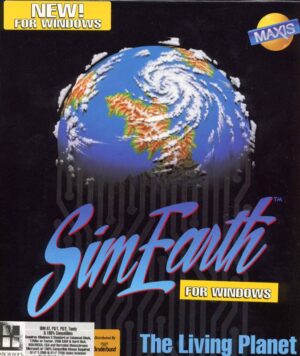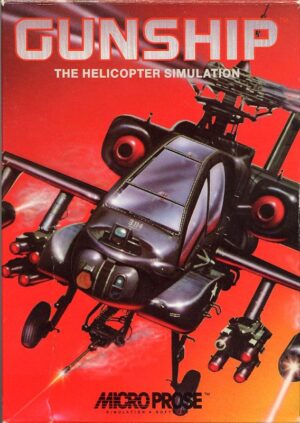Retro Replay Review
Gameplay
Thunder Force II delivers a hybrid shooter experience by alternating between side-scrolling and overhead top-down stages. In side-scrolling segments, you pilot the Styx fighter through enemy formations and environmental hazards, reminiscent of R-Type or Gradius in feel but stripped down to a more accessible weapon suite. Your main armament can be toggled between a single, powerful forward shot and twin weaker turrets firing both forward and backward, adding a simple layer of strategy: do you need concentrated firepower or coverage against flanking foes?
The overhead stages shift the action to a 90-degree perspective, where movement is limited to cardinal directions and momentum cannot be modulated. This design choice forces you to plan each thrust carefully, weaving through enemy clusters and static obstacles without the possibility of fine-tuned speed control. Though this can feel rigid compared to more forgiving vertically scrolling shooters, it introduces a fresh challenge that keeps the action from growing stale.
Power-ups are sprinkled throughout every level, enhancing your ship’s fire rate, spread, and overall damage. Collecting them becomes a frantic priority, as the difference between a handful of basic shots and a fully upgraded weapon can mean surviving a boss onslaught or facing an untimely game over. With no shield gauge, every hit is fatal, so mastering the weapon toggle and memorizing enemy patterns is essential for progression.
Graphics
As an early Mega Drive / Genesis title, Thunder Force II pushes the hardware with detailed sprites and vibrant color palettes. Side-scroll stages feature well-drawn enemy craft and scrolling parallax backgrounds that give a sense of depth, while top-down levels emphasize clear terrain outlines so you can plot your course around obstacles. Though the overall aesthetic is simpler than its successors, it remains charming in a retro-arcade style.
Enemy bullets and projectiles stand out crisply against darker backdrops, making it easier to navigate tight bullet patterns. Explosions are rendered with bright yellow and orange flashes, giving each victory a satisfying visual payoff. Boss designs range from spindly gun platforms to squat citadels, and their multi-phase encounters offer both a test of your reflexes and a mini showcase of the game’s sprite animation capabilities.
Transitions between the two gameplay modes come with subtle visual cues—camera zooms, background shifts, and changes in scroll direction—so you’re never jarred by sudden perspective swaps. While some tileset reuse is apparent, the varied environments (from mechanical zones to alien landscapes) help maintain a sense of progression as you press toward the final stages.
Story
Thunder Force II’s narrative is minimalistic, a hallmark of many shooters from its era. You assume command of the Styx, humanity’s last hope against the ORN empire, a ruthless alien consortium bent on galactic conquest. Brief intermission screens outline your mission objectives, but there’s little beyond “rescue, retaliate, survive.” The emphasis is squarely on continuous action rather than character arcs or plot twists.
Although story beats are sparse, TechnoSoft peppers in a few cinematic title cards between levels, describing your progress and heightening the stakes. Sentences like “The ORN stronghold approaches!” or “Enemy reinforcements en route!” provide context for each stage, giving your run a semblance of a cohesive campaign. For many players, these little narrative anchors are enough to keep them invested in seeing how far they can push toward ORN’s core.
If you’re looking for deep lore or branching storylines, Thunder Force II may feel bare-bones. Yet its brisk pace and focus on pure shooting action underscore the developer’s intent: to craft a relentless shooter that tests reflexes rather than plot comprehension. For fans of the genre, the simplicity is part of the charm.
Overall Experience
Thunder Force II stands out as a formative entry in a storied franchise. Its blend of side-scrolling and top-down gameplay delivers two distinct shooting challenges within one cartridge, offering greater variety than many contemporaries. Though its weapon system is more rudimentary than in later sequels, it remains satisfying to switch between modes on the fly and tailor your approach to each level’s layout.
The learning curve is firm but fair: you’ll die quickly to stray bullets or ill-timed maneuvers, yet each retry feels like progress as you memorize enemy patterns and optimal power-up routes. Boss battles provide climactic hurdles that demand both patience and lightning-quick reactions, rewarding players who master the game’s core mechanics.
For modern buyers, Thunder Force II serves both as a playable retro shooter and a historical piece showcasing the early days of 16-bit design. While newer shooters offer more sophisticated weapon arrays and smoother controls, this title’s straightforward gameplay loop and nostalgic pixel art hold up surprisingly well. If you appreciate classic arcade-style challenge and want a glimpse of where the Thunder Force legacy began, Thunder Force II remains an engaging choice.
 Retro Replay Retro Replay gaming reviews, news, emulation, geek stuff and more!
Retro Replay Retro Replay gaming reviews, news, emulation, geek stuff and more!









Reviews
There are no reviews yet.